Hello, darlings!
In 1861, during the reign of our sovereign Queen Victoria (curtsy please!), Mrs Isabella Beeton’s most treasured creation, Beeton’s Book of Household Management, was first published. And as nature intended, she flourished into the worlds-greatest teacher of all things “domestic and culinary”.
In fact, Mrs Beeton’s been hailed as the “grandmother of the modern-day domestic goddess” – but frankly my dears, I beg to differ! As clearly, due to her untimely farewell via the Pearly Gates, the honourable title of godmother is a far more suitable fit – concur? Nevertheless, as my most favoured mentor, and wizard of all things household management, I wholeheartedly appreciate Mrs Beeton’s most welcome counsel when fulfilling my duties as the mistress, housekeeper, or cook of the Miss Windsor household – I do indeed, wear many hats!
So, darlings, let’s dash off to memory lane, where together we’ll embrace the brilliance of this avant-garde, and highly acclaimed woman of Victorian society – How spiffing!
Isabella Mary Mayson was born at 24 Milk Street, Cripplegate, Cheapside, London on 14th March 1836.
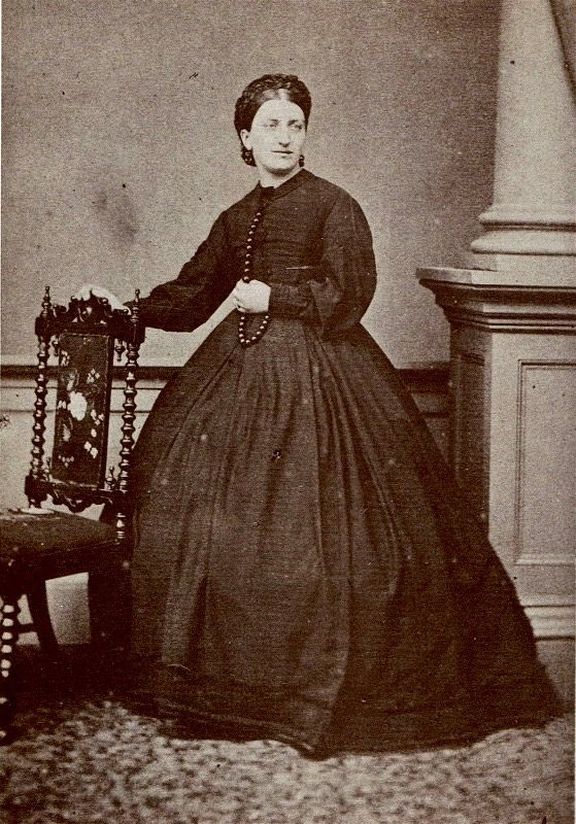
Sadly, whilst merely a nipper, Isabella’s father Benjamin died when he was just 39 years old. Leaving a number of children, her mother, Elizabeth, eventually married a widower – Mr Henry Dorling – a bookseller and printer from Epsom, Surrey. Together with Henry’s four children, they increased their brood into an astounding gaggle of seventeen (or possibly twenty-one!) – “Cor blimey”, I hear you utter! Incredibly, this swollen menage apparently lived in rooms under the Epsom Downs grandstand.
Isabella’s step-father, Henry, was quite a generous old chap who packed her off to finishing school in Heidelberg, Germany to study music and languages. Presumably, there she dabbled in the basics of home economics, including the art of pastry making.
Thus, upon her return home to Epsom, Isabella toddled off to her local high street and received further pastry lessons from the exquisite Barnard establishment – and some folk believe she may have actually worked there for a scanty while. Owned by William Barnard, a confectioner, who in 1860 advertised his services as the “Fancy Bread and Biscuit Baker” – Oh, I say!
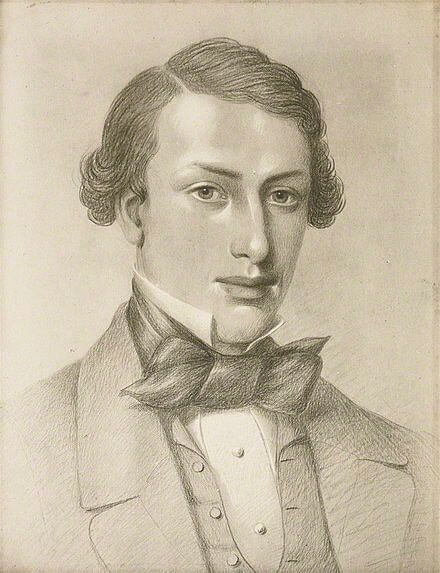
”Extra! Extra! Read All About it!”
On the 10th July 1856, Isabella married a rather dashing young chap – publisher and magazine editor, Mr Samuel Orchart Beeton.
Once settled into married life, Mrs Beeton started her career writing articles for her husband’s monthly publication – The Englishwoman’s Domestic Magazine – about housekeeping tips, cookery items, and fashion. Samuel started this magazine in 1852, and by 1856 he was selling around 50,000 copies a year. And through Isabella’s work, she became well-known as a journalist, editor, and writer – the positions of which, may I add, were quite an anomaly during such era.
At 21 years old, and just a slip of a girl, Mrs Beeton commenced work on her first culinary triumph, which was published in 1859 as twenty-four monthly instalments. Then in 1861, the year my great great grandmother Georgina was born, the instalments evolved into a book. Furnished with the grand title of Beeton’s Book of Household Management, which was published by S.O Beeton Publishing, 248 Strand, London, and sold 60,000 copies in its first year.
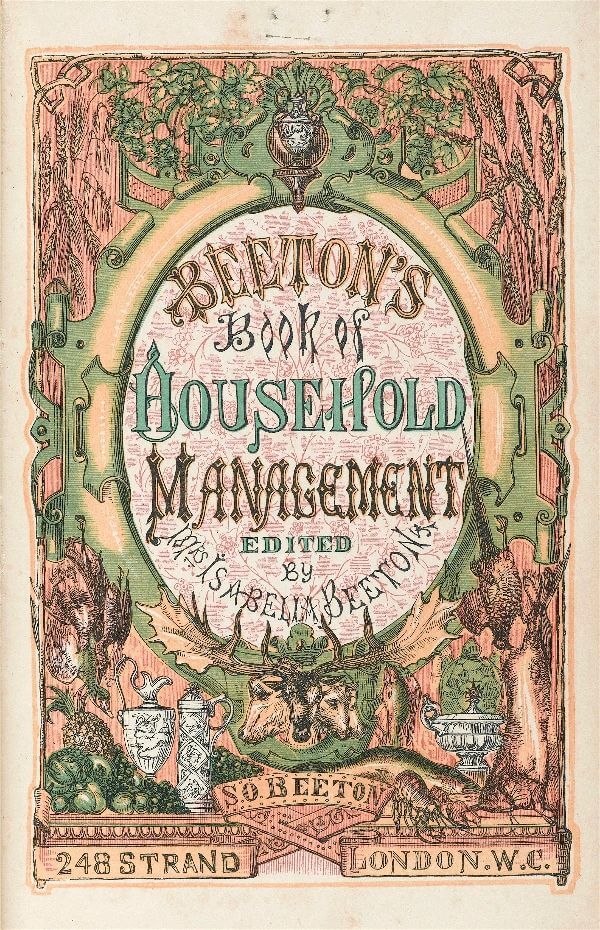
By Jove, darlings! Thank goodness, I was lucky enough to get my hands on a copy – the 1906 edition – sporting the slightly altered title of Mrs Beeton’s Book of Household Management.
I must say, yet somewhat eccentric in her ways, I find Mrs Beeton’s writing witty and informative, and in parts, emanates an extraordinary comedic flare. An intelligently written masterpiece, and in Miss Windsor’s opinion, long may she reign as QUEEN of the cookery writers’ industry.
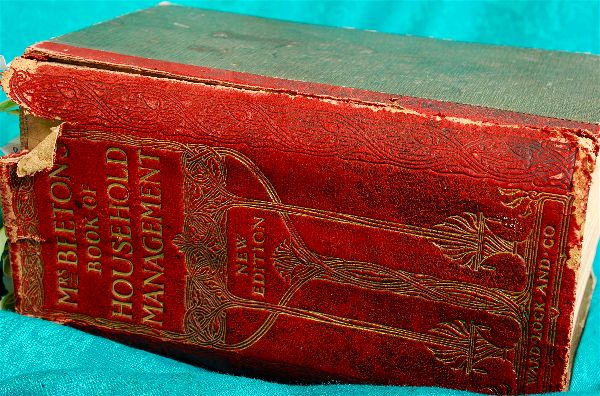
Amazingly, double the size of the original, my 1906 version exceeds 2056 pages – a stonker of a book! In fact, its best described as some kind of culinary reference book, encyclopedia or bible.
Followed by a catalogue of adverts for British household favourites – Fry’s Cocoa (Five Boys Milk Chocolate), Cadbury’s Cocoa, McDougall’s Flour, Jeyes’ Disinfectants, Harrods, Sainsbury’s, and Atora Beef Suet – most of whom are still going strong today, and are, in fact, some of Miss Windsor’s pantry favourites!
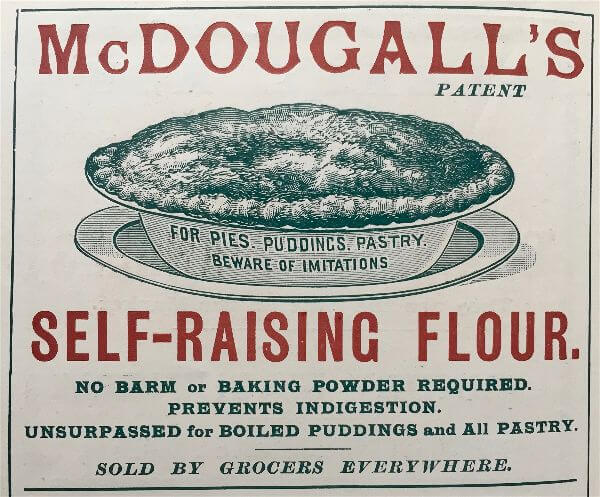
Moving swiftly on, in 1861 Mrs Beeton and darling Samuel founded The Queen, the Ladies Newspaper, a weekly publication that offered easy to read amusements for its patrons. However, in 1862 they sold their literary creation to William Cox but little did they know, it would transpire to be one of the longest-serving English magazines dedicated to women and fashion. Then in 1968 it was sold again and relaunched as Harpers & Queen, now known as Harpers Bazaar.
Darlings, Beeton’s Book of Household Management was first published during a time when newly-wed middle-class women were often separated from their mother’s apron strings by miles upon miles, so to speak. So, as the mistress of the house, and in need of direction, the pressure quickly mounted to oversee that all household duties were carried out correctly, including their own. Therefore, droves of ladies called upon Mrs Beeton’s counsel for help and advice – good call, darlings!
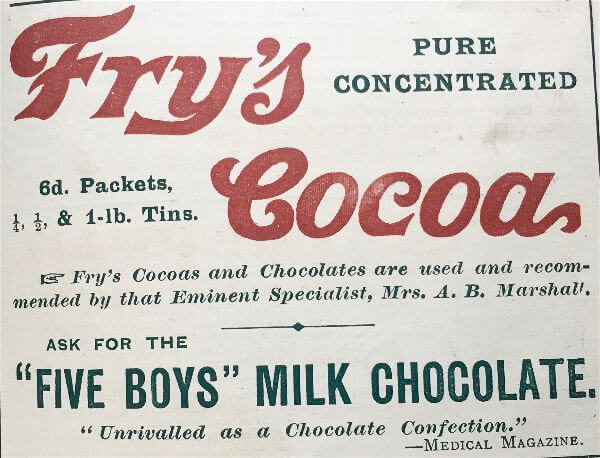
Attention please: as Mrs Beeton proclaims to the mistress of the house, “She ought always to remember that she rules the household; and by her conduct, its whole internal policy is regulated. She is, therefore, a person of far-reaching importance!” – I say, Miss Windsor couldn’t agree more!
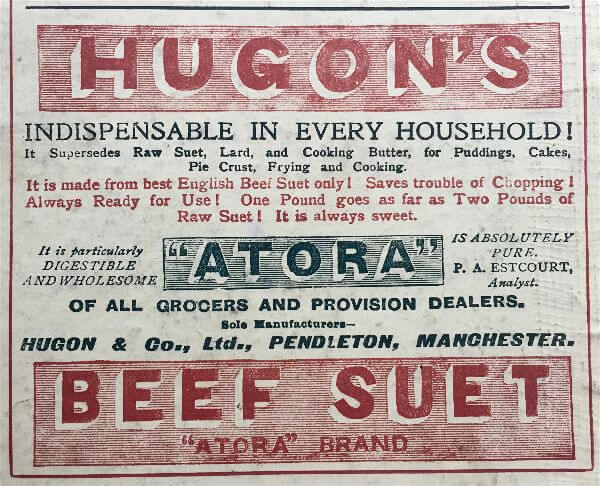
Luckily, Mrs Beeton’s book covered everything, such as advice for the mistress and housewife, hospitality, good temper, dress, fashion, wages of servants, parties, and so on.
Mrs Beeton wishes to add, “When a mistress is an early riser, it is almost certain that her house will be orderly and well managed. On the contrary, if she remains in bed till a late hour, then servants, who, as we observed, invariably acquire some of their mistress’s characteristics, are likely to become sluggards” – well said, Mrs Beeton!
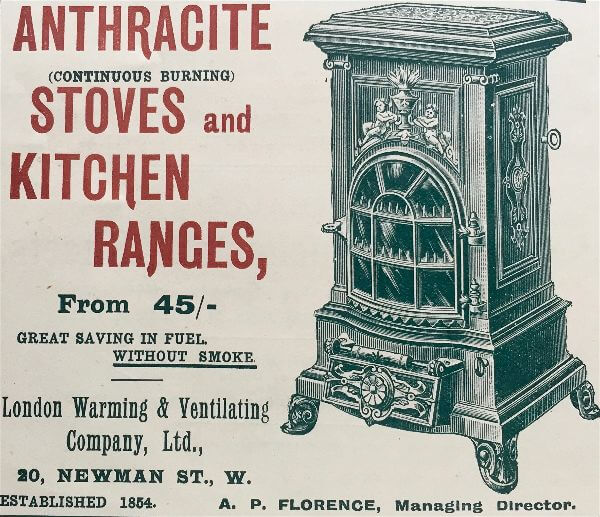
In addition, Mrs Beeton details the duties and responsibilities of the cook, kitchen maids, and housekeeper, and warns all cooks, “If you are told to prepare anything you’re not certain about, have the courage to say so and ask your mistresses advice. How many dishes and dinners have been spoilt because cooks have been too proud to confess ignorance!” – cooks, please do take heed!
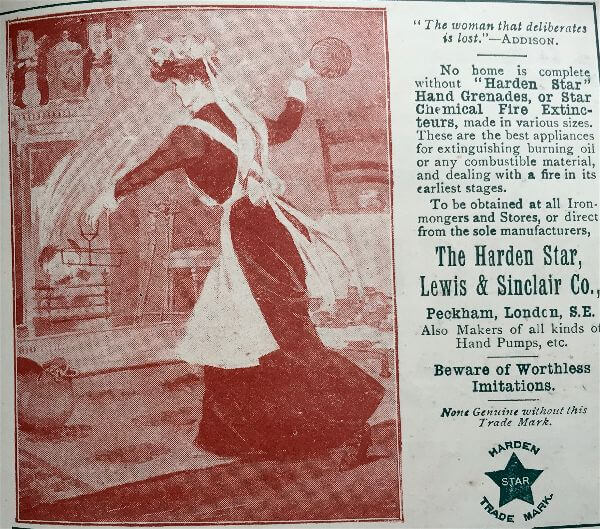
Followed by information on how to run a kitchen, utensils and appliances, wages of servants, menu making, the butler’s pantry, nursing and homoeopathic medicine, the doctor, invalid furniture, and legal memoranda.
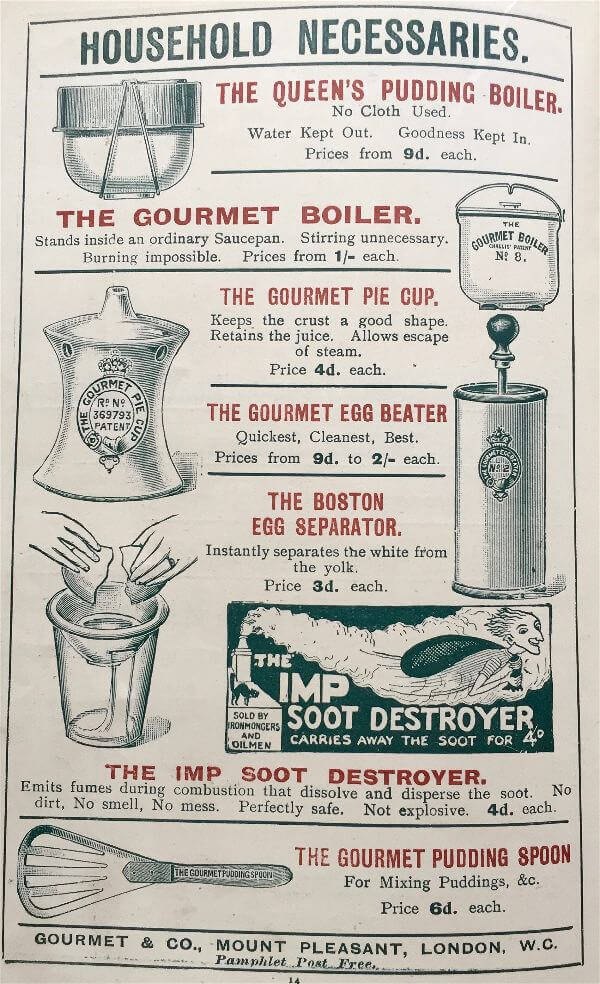
I say, darlings, the real gem of this book, is the extensive portfolio of recipes, together with colourful lithographic art illustrations, and photographic reproductions, which are included in the later versions – like Miss Windsor’s 1906 copy.
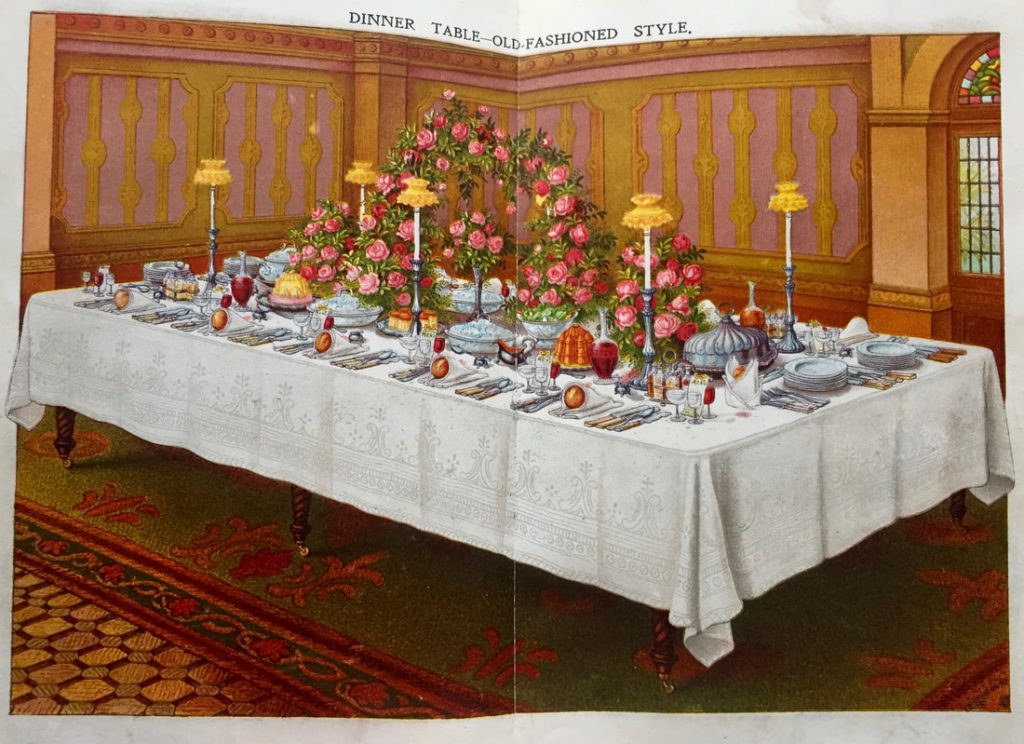
I must confess, during an afternoon tea break, I often take comfort in Mrs Beeton’s book, and aimlessly flick through the brown-tinged, frayed pages on some kind of educational quest.
Although, a trifle amused, albeit a pinch shocked by some of the recipes one just so happens to cast an eye on! I am, indeed, delighted when I stumble across fascinating, yet peculiar cuisine from a bygone era such as Turtle Soup, Stewed Pigeons, Blackbird Pie, Brain Fritters, Peptonized Gruel, Parrot Pie, followed by a sweet treat of Porcupine Pudding.
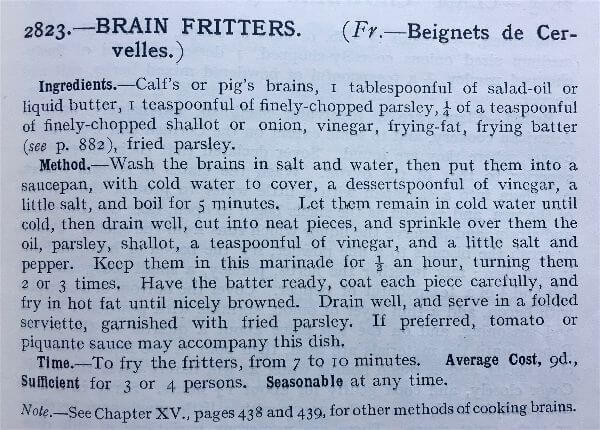
The recipe on page 165 for Good Woman’s Soup (potage a la bonne femme – Ooh, la, la!) certainly makes me chuckle! I wonder, darlings, could it be possible to create a “good woman” from white-heart lettuce and a thick slice of cucumber? Answers on a postcard, please!
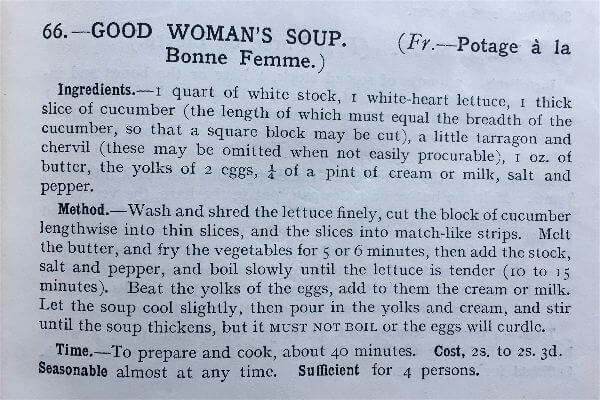
Also, buried deep within my 1906 version, you’ll find recipe categories for General Observations on The Common Hog, Recipes for Cooking Hare & Rabbit, Invalid Cookery, Jewish Cookery, Indian Cookery – to name, but a few! Oh, and not forgetting recipes for the Use of Butler, Footman, Coachman, Groom, Valet, Lady’s Maid, Man-Servant, Parlour-Maid, House-Maid, and Laundry-Maid.


Darlings, many say that Mrs Beeton was quite ahead of her time in the sphere of recipe writing; observed as a stickler for thriftiness and one for tightening the purse strings, as it goes! And where possible, she suggests an alternative, budget-friendly, satisfying recipe, instead of the version that requires pricey ingredients.
Of course, although the economical recipe endeavours to save money and often time, Mrs Beeton advises, “Economy and frugality must never, however, be allowed to degenerate into meanness” – yes mistress!
Although contemporary in style, Mrs Beeton wrote easy to follow detailed instructions, which include a list of ingredients at the start of the recipe, cooking times, cost of the recipe, along with antiquated “imperial” measurements, such as ounce, pound, stone, drachm, quarter, hundredwt, ton, fluid drachm, pint, gallon, peck, bushel, sack, chaldron, load – including the trusty old “teacup”!
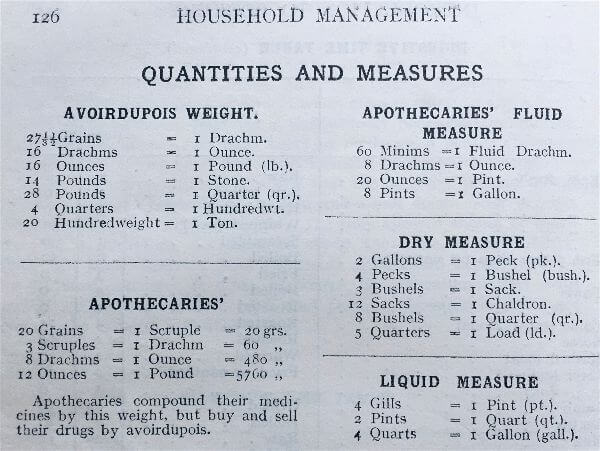
More wise words from Mrs Beeton: “The young housekeeper, cook, or whoever may be engaged in the important task of ‘getting ready’ the dinner or other meal, to follow precisely the order in which the recipes are given. Thus, let them first place on their table all the ingredients necessary; then their method of preparation will quickly and easily be managed” – thank you, Mrs Beeton.
But rumour has it, she snaffled a fair few recipes from other famous cooks such as Eliza Acton, who in 1845 published Modern Cookery for Private Families – slapped wrist, Mrs Beeton! She also included recipes that were created by her readers and first showcased in her monthly column. Apparently, her half-sister Lucy Smiles, recalled that Baroness de Tessier of Epsom gave her a recipe for Baroness Pudding, made of suet and raisins.
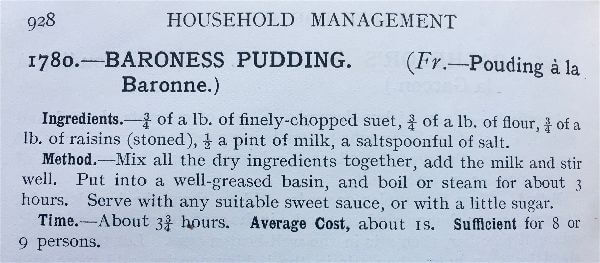
Darlings, but as I delved deeper into Mrs Beeton’s life, I stumbled across Kathryn Hughes (historian & author) who’s been exposed as a touch obsessed with Mrs Beeton, and apparently remortgaged her home to be the proud owner of an assemblage of Mrs Beeton’s letters. Miss Hughes also spent a number of years researching Mrs Beeton’s culinary wrongdoings, thus proved many of her recipes were copied word for word from other food writers of her day, and beyond.
Hmmm just thinking out loud here: to be brutally honest darlings, and in today’s modern world, if such whispers proved correct I’m sure Mrs Beeton would be known as a damn right plagiarist! However, I’m certain that without her unfettered efforts, many households would’ve erupted into an almighty mass of chaos, therefore, one must express gratitude for the laborious works of our beloved Mrs Beeton.
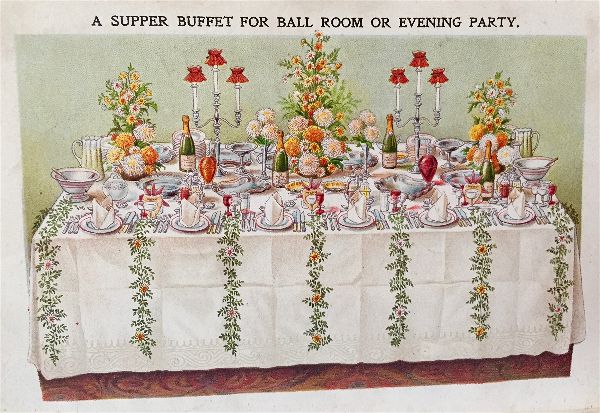
My research revealed that Mrs Beeton, along with her cook and kitchen-maid would test one recipe per day in her kitchen in Hatch End, Pinner, London. I dare say, but what a load of old cobblers! I doubt she had time to participate in any extra culinary activities, as she was a wife, mother, mistress of the house, and a career woman!

Then apparently, if a success, and deemed worthy of Mrs Beeton’s book, she would rewrite the recipe in accordance with her new recipe format. And as confirmed by Kathryn Hughes, Mrs Beeton’s ONLY additions were a list of ingredients at the start of the recipe, including cooking times, and as for the rest of the content, she copied from many notable female cooks.

An obvious example of Mrs Beeton’s plagiaristic exploits is that the type of measurements noted in her writing seems to differ from one recipe to another – where one says pounds and ounces, another states teacups! I say, darlings, due to her recipe content which clearly lacks uniformity: one wonders how many recipes Mrs Beeton actually did rewrite? But nevertheless, Kathryn Hughes proudly declared to The Guardian newspaper, “Mrs Beeton was an extraordinary innovator” – of course, Miss Windsor couldn’t agree more!
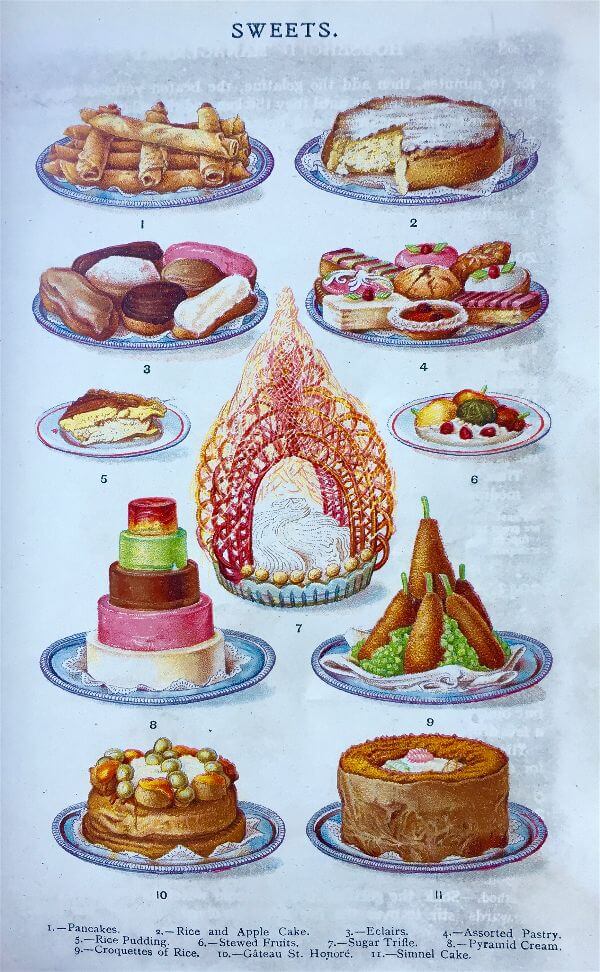
Now, would you Adam and Eve it! nestled amongst hundreds of recipes in my 1906 version of Mrs Beeton’s masterpiece, apparently, lies, her ONE and ONLY recipe to be of her own creation – Benevolent Soup! Originally known as Useful Soup for Benevolent Purposes.
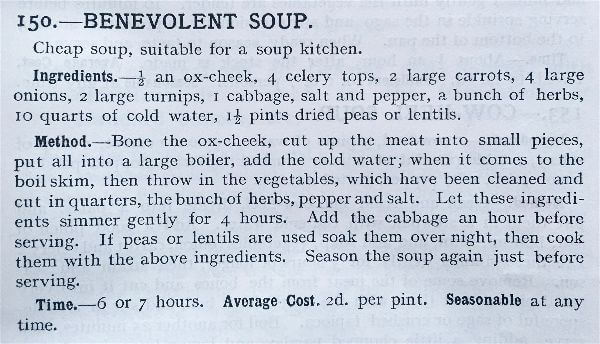
You see, the history books dictate, that in 1858 England endured a terribly harsh and deathly cold winter. So much so, our charitable, selfless, and kindly Mrs Beeton set up a soup kitchen from her home and served a hearty, meat-based, chunky vegetable, and liquor-laced concoction – namely half a pint of beer, although, my 1906 version calls for water ONLY! Mrs Beeton served her creation to the hungry, homeless, and destitute folk of Hatch End, Pinner – Mrs Beeton a pillar of her community!
Now darlings, what I’m about to announce brings a trickle of a tear to my eye – at the tender age of 28 years old, Mrs Beeton passed away on the 6th February 1865 and was buried at Norwood Cemetery, London. Tragically, following the birth of her fourth child, she died from peritonitis and puerperal fever. But according to various sources, darling Samuel had possibly infected her with syphilis, which one presumes caused the death of two of their sons.
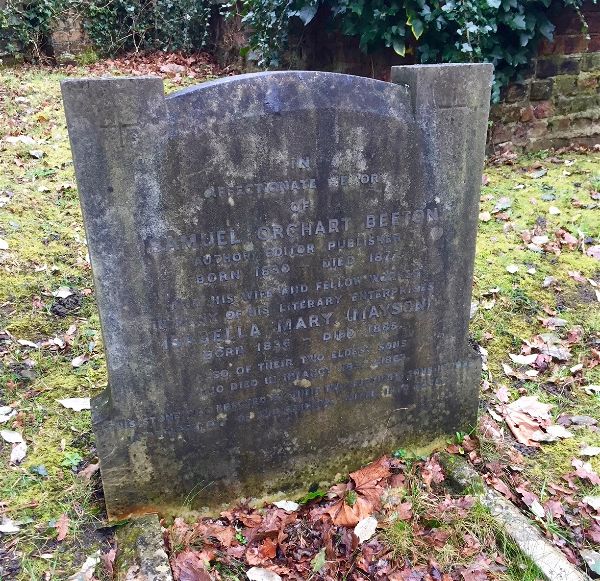
There, there, don’t bleat my little lambs! Following Mrs Beeton’s early departure, Samuel made her name into a global brand – What a wonderful way to commemorate her work! And according to one of Miss Windsor’s mentors: the jolly old internet, Mrs Beeton bequeathed to the arena of all things domestic and culinary, her final offering, which she completed just a few weeks before her death – Mrs Beeton’s Dictionary of Every-Day Cookery, published in 1865 by S.O Beeton, 248 Strand, London.

However, in 1866, Mr Samuel Orchart Beeton was swamped in debt – one wonders if this was due to the expense of two court cases he was embroiled in? Therefore, to avoid bankruptcy he sold the rights to his business, along with Mrs Beeton’s book (or books?) to Ward Lock & Co. Limited. Fortunately, they allowed him to continue running the business, and using Mrs Beeton’s well-established name, published updated versions of Beeton’sBook of Household Management – again and again.
Sadly, the poor old chap died on the 6th June 1877 of pulmonary consumption and was laid to rest next to his sweetheart in Norwood Cemetery.
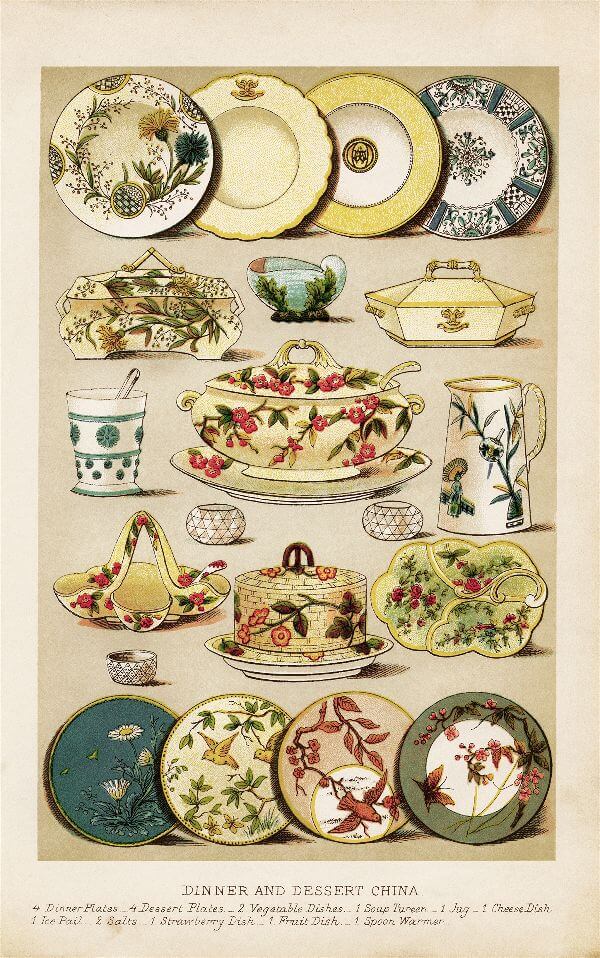
Unfortunately, many years later the Beeton’s home in Pinner was bombed during the Blitz of 1940. However, as a touching mark of remembrance, I discovered that a road in Hatch End, Pinner had been lovingly furnished with the grand title of Beeton Close – isn’t that lovely!
Darlings, before Miss Windsor retires to the comfort of her boudoir, she hereby affirms that Mrs Beeton, a truly inspiring lady, who for nearly hundred and sixty years merely with written words and illustrations, provided help and guidance in the realm of household management, to the aspiring mistress, housekeeper, or cook.
Therefore, I undoubtedly believe, Mrs Beeton’s legacy will trickle down into today’s modern-day society and her valuable teachings will be cherished and practised by generations to come.
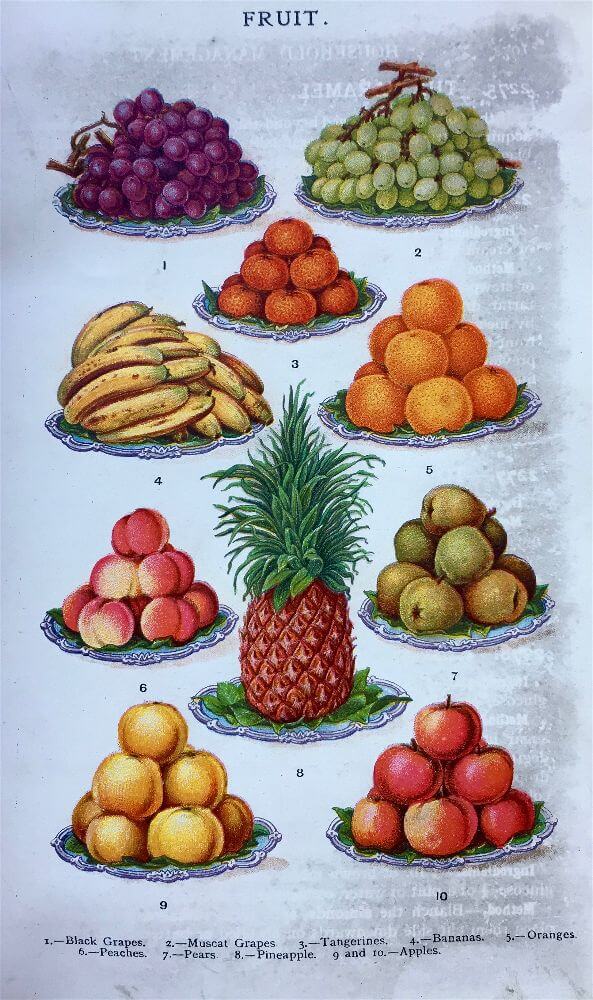
As part of my work in “Bringing food history alive”, it is my wish to live on in Mrs Beeton’s name: to revive and recreate recipes from my 1906 edition of Mrs Beeton’sBook of Household Management – with a Miss Windsor twist, of course! Which will serve as the perfect opportunity to pay homage, and to celebrate the mastery of our illustrious, English culinary marvel Mrs Isabella Beeton.
“Bringing food history alive,
and theatre to your table”
Darlings, hush please, whilst Mrs Beeton says a few words:
“I must frankly own that, if I had known beforehand the labour which this book has entailed, I should never have been courageous enough to commence it. What moved me, in the first instance, to attempt a work like this, was the discomfort and suffering which I had seen brought about by household mismanagement” – Miss Windsor, couldn’t agree more!
ISABELLA BEETON
248, Strand. 1861
Darlings – if you fancy stepping back in time and recreating one of Mrs Beeton’s mouth-watering cakes, then please do CLICK THE LINK BELOW for Miss Windsor’s Seriously Scrumptious Lemon & Coconut Cake:
miss-windsors-seriously-scrumptious-lemon-coconut-cake.html
Miss Windsor x
ALL RECIPES, ILLUSTRATIONS & ADVERTS ARE TAKEN FROM 1861 EDITION OF BEETON’S BOOK OF HOUSEHOLD MANAGEMENT & 1906 EDITION OF MRS BEETON’S BOOK OF HOUSEHOLD MANAGEMENT.

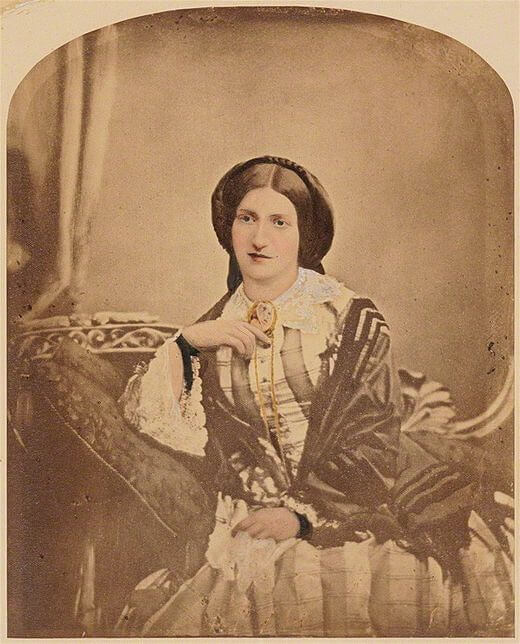
Miss Windsor!
Really enjoyed the Mrs Beeton blog. Come and see our show @BOVTS Mrs Beeton Says – world premiere of @EamonnODwyer & @wattsabout ‘s brilliant new musical the Redgrave Theatre, Bristol.
Well done, Paul.
Such a lovely article and so informative and interesting. I’m a big fan of Mrs Beeton myself. What a woman! Sadly, I lost my Mum’s copy of Household Management and do envy you yours! Love all the adverts too: especially the hand grenades for putting out fires – could come in handy!
Looks good, Miss Windsor! A fun and interesting read. How things have changed. Anyway, well done.
Hello,
It was nice to meet you on Twitter.
A splendidly enjoyable post. However, as regards to the recipe for ‘Brain Fritters’ a ‘Don’t try this at home!’ type warning is probably advised!
Hi Miss Windsor
I recall we met on Twitter. Very fun and informative post. Just needs a footnote about the Sherlock Holmes connection.
Hi Miss W,
A really interesting post. Great point of reference. I’ve learnt so much about Mrs Beeton.
Again, you write really well, just like you’re telling a story.
Thank you.
Hello,
Very good post.
Great writing style. Captivating. Humorous. Detailed. Different.
Fabulous, darling!
Fascinating. I now know more about my Grans old Mrs Beeton cooking book. Thanks